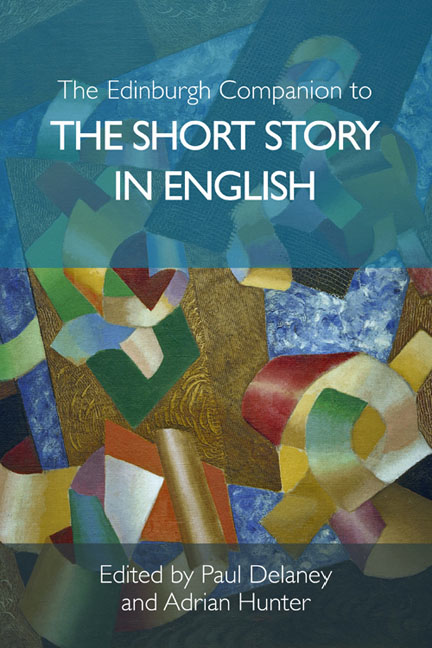Book contents
- Frontmatter
- Contents
- Acknowledgements
- Notes on Contributors
- Introduction
- Part I Historicising the Short Story
- Part II Publishing the Short Story
- Part III Forms of the Short Story
- Part IV Placing the Short Story
- 14 Regionalism and the Short Story
- 15 The Short Story and the City
- 16 The Short Story in Suburbia
- 17 The Short Story and the Environment
- Part V Identity and the Short Story
- Index of Short Story Titles
- General Index
16 - The Short Story in Suburbia
from Part IV - Placing the Short Story
Published online by Cambridge University Press: 18 December 2019
- Frontmatter
- Contents
- Acknowledgements
- Notes on Contributors
- Introduction
- Part I Historicising the Short Story
- Part II Publishing the Short Story
- Part III Forms of the Short Story
- Part IV Placing the Short Story
- 14 Regionalism and the Short Story
- 15 The Short Story and the City
- 16 The Short Story in Suburbia
- 17 The Short Story and the Environment
- Part V Identity and the Short Story
- Index of Short Story Titles
- General Index
Summary
JOHN CHEEVER, REFLECTING IN ‘Why I Write Short Stories’, argues that some contemporary art forms have ‘lost the language of the landscape’, but that the short story is particularly suited to expressing ‘the newness in our ways of life’ in that landscape. He refers specifically to life in the suburbs and the ephemera that characterise it, which ‘confound traditional esthetics’. The ‘newness’ of the American landscape was, in the post-Second World War period, largely associated with the growth of suburbs. Although suburban landscapes have diversified and proliferated since then, many of the popular images of suburbia derive from the mass-produced housing developments of the post-war period. In the stories of Cheever, John Updike and others associated with The New Yorker magazine, an iconography of suburbia was created, and these images become part of a suburban aesthetic and sensibility articulated particularly through the short story form. The concept of the suburbs is essentially spatial and in suburban short stories, this chapter suggests, the spaces of the suburban setting become tied to the spatiality of the short story form.
When he founded The New Yorker in 1925, Harold Ross, who remained its editorin- chief until his death in 1951, intended it to capture the spirit of Manhattan in the 1920s, and to reflect an image of sophistication and urbanity to a largely metropolitan readership. By mid-century, following several decades of growing circulation, that readership had changed dramatically, and was increasingly composed of those whose attachment to the city was tenuous, and often nostalgic. According to Mary F. Corey, the magazine's own market research shows that, by 1959, half of subscribers were recorded as housewives, many of whom lived in the suburbs. To such readers, Corey observes, The New Yorker offered either a cherished memory of the urbanity and ‘cosmopolitanism’ they had left behind, or the image of a sophisticated metropolitan life to which they might aspire. Advertisements for luxury consumer goods spoke to a narrative of prosperous self-improvement and self-reinvention through consumption, while the distinctive New Yorker tone – ‘knowing, a trifle world-weary, prone to selfconsciousness and irony’ – performed a commensurate ‘commodification of taste and sophistication’ which, as Faye Hammill observes, was ‘crucial to the sense of verbal privilege’ on which The New Yorker relied.
- Type
- Chapter
- Information
- The Edinburgh Companion to the Short Story in English , pp. 256 - 271Publisher: Edinburgh University PressPrint publication year: 2018



